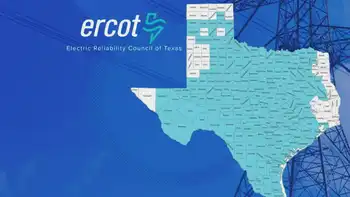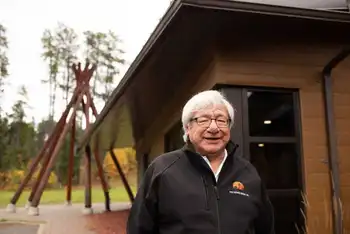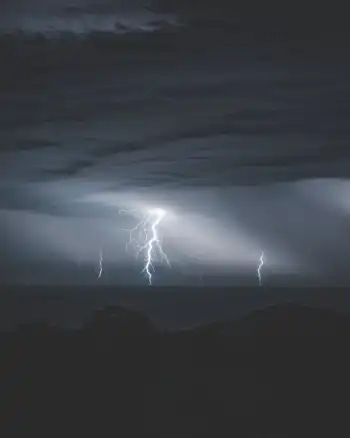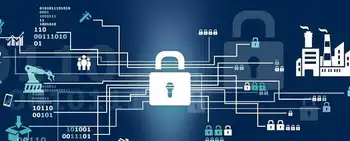Valley power play over coal continues
Until someone suggests plunking down a coal-burning plant in their neighborhood, near their cabin or their favorite fishing hole. Then it's the talk of the town.
"The basic issue is nobody wants a coal plant in their backyard," said Jim Sykes of Lazy Mountain, a founder of the Green Party of Alaska. "But regardless of where they put the coal plant, everybody is going to be affected by it, by the coal dust from coal piles and wherever the train takes the coal, it blows. And you know what kind of winds we have here."
Sykes is also president of UtilityWatch, a group fighting plans by the Matanuska Electric Association to build two new 100-megawatt power-generating plants, the first of them powered by coal and to come online by 2015.
That kind of talk by Sykes is mostly spin, counters David Dahms, a member of the MEA board of directors. What people don't understand about the utility's plans, he said, is that "this is not your father's coal plant." MEA is the only utility along the Railbelt, which stretches from Homer to Fairbanks, without the ability to generate all the power its customers need.
MEA is part owner of the Eklutna Hydroelectric Project, which guarantees up to 19.5 megawatts, but that's only about one-sixth the MEA peak demand, currently 130 megawatts. Tuckerman Babcock, MEA human resources manager, said the inability to generate electricity has left MEA powerless at the bargaining table when other utilities talk about power pooling or joint generation plans.
"They're all at a stage where they're thinking about 'what if we all share in a big plant?' because they have their own power to fall back on," Babcock said. "MEA is not in that position. We have to have our local generation plant first so if the big plant goes down, we have ability to keep lights on here in the Valley."
MEA critics say the utility should have worked harder to combine efforts with other Railbelt utilities. And Sykes said MEA should have asked its members to vote on power generation methods, just as it asked them to vote on a site for the power plants. More than 260 people agreed with Sykes.
Those MEA members took extra steps to send their advisory ballots to UtilityWatch this week, many with "no coal" scrawled across the front, rather than return the ballots to MEA to be counted. "We should have a new plan. We need to explore all the options, from alternative to synergy with other utilities," said Pete Houston, president of the MEA Ratepayers' Alliance, another group actively fighting MEA coal plans.
MEA spokeswoman Lorali Carter said holding a ballot vote on future generation for a 41,000-member utility is a stretch. "No utility does that," Carter said. "When it comes to the very complex issues surrounding how to provide power generation, those decisions are left up to the experts. It's just not done."
Both groups say MEA should release the entire 70-page Integrated Resource Plan, or IRP, prepared by engineering consultant CH2M Hill, for which MEA paid $130,000. The board based its decision to build the two plants on the IRP. Only the 10-page summary is publicly available. The coal plant would incorporate fluidized-bed technology and provide the bulk of MEA power demands. It and a natural-gas plant would go online by 2015 and together they would provide 200 megawatts of electricity. Another 26.5 megawatts would come from renewable energy sources, according to Babcock.
Electricity from coal would cost $60 per megawatt, based on estimates for coal purchased in Healy and shipped by rail.
Power from a gas-fired plant would run $77 per megawatt, Babcock said. Fluidized-bed technology burns cleaner than earlier coal-fired plants by combining sulfur with lime to create a solid rather than a gas. The solid is trucked away for disposal rather than emitted into the atmosphere, according to the U.S. Department of energy Babcock said the plant could also use up to 30 percent biomass, everything from cardboard to brush, as fuel.
How much and what material is used will depend on local markets, he said. It's not clear yet how the new plants will be paid for. MEA administrators are still looking at options, including obtaining a low-interest loan from a utility financing bank or signing a power-sales agreement with a company that builds the plant.
Created in 1941, MEA is the state's oldest electric cooperative. In 1950 the cooperative first contracted for its power supply with fledgling Chugach Electric Association. In 1987, MEA signed a 25-year contract to buy wholesale power from that utility. MEA has chafed under that commitment. "What happens when we have problems here in the Railbelt is... MEA is left in the dark," Babcock said.
"We play second fiddle to their retail customers." Chugach disputes that claim. "No two power outages are alike," said Phil Steyer, director of government relations and corporate communications for Chugach.
"How you restore an outage depends on what pieces of the system are available to you... the physics of every outage are different." MEA and Chugach business dealings are marked by often bitter disputes. MEA in 1994 defeated a Chugach takeover attempt. In 1998, MEA retaliated with its own hostile takeover attempt that Chugach members rejected. In 2002, MEA asked the Regulatory Commission of Alaska to declare Chugach unfit to serve its customers and to appoint MEA to take over power distribution duties for the utility. That move, too, failed. Money is at the root of the conflict. The MEA board this year adopted a $92 million budget, Babcock said.
Chugach gets $61 million of that. MEA has long complained that it should, but does not, have a seat on the Chugach board of directors. As part of its report, CH2M Hill considered extending the Chugach contract, which this year cost MEA $80 per megawatt.
Babcock said the IRP says MEA could save "hundreds of millions of dollars" by building a coal-fired plant and splitting from Chugach. He declined to specify how MEA reaches those savings, saying that information is part of the undisclosed IRP. More and more members are urging MEA to release that information and the board may vote to do so at some point, he said.
Related News

More Polar Vortex 2021 Fallout (and Texas Two-Step): Monitor For ERCOT Identifies Improper Payments For Ancillary Services
DALLAS - Potomac Economics, the Independent Market Monitor (IMM) for the Electric Reliability Council of Texas (ERCOT), filed a report with the Public Utility Commission of Texas (PUCT) that certain payments were made by ERCOT for Ancillary Services (AS) that were not provided.
According to the IMM (emphasis added):
There were a number of instances during the operating days outlined above in which AS was not provided in real time because of forced outages or derations. For market participants that are not able to meet their AS responsibility, typically the ERCOT operator marks the short amount in the software. This causes the…





